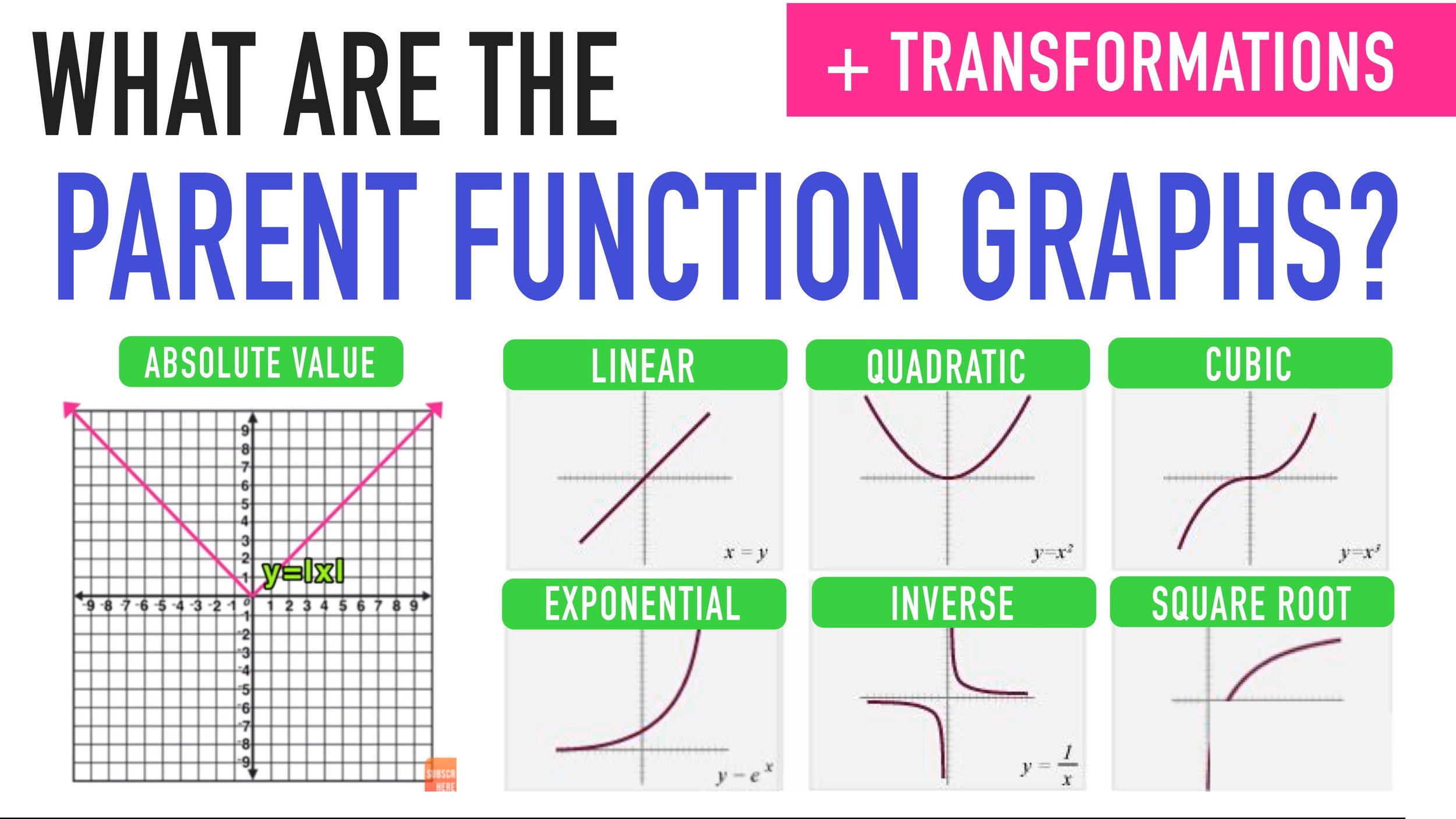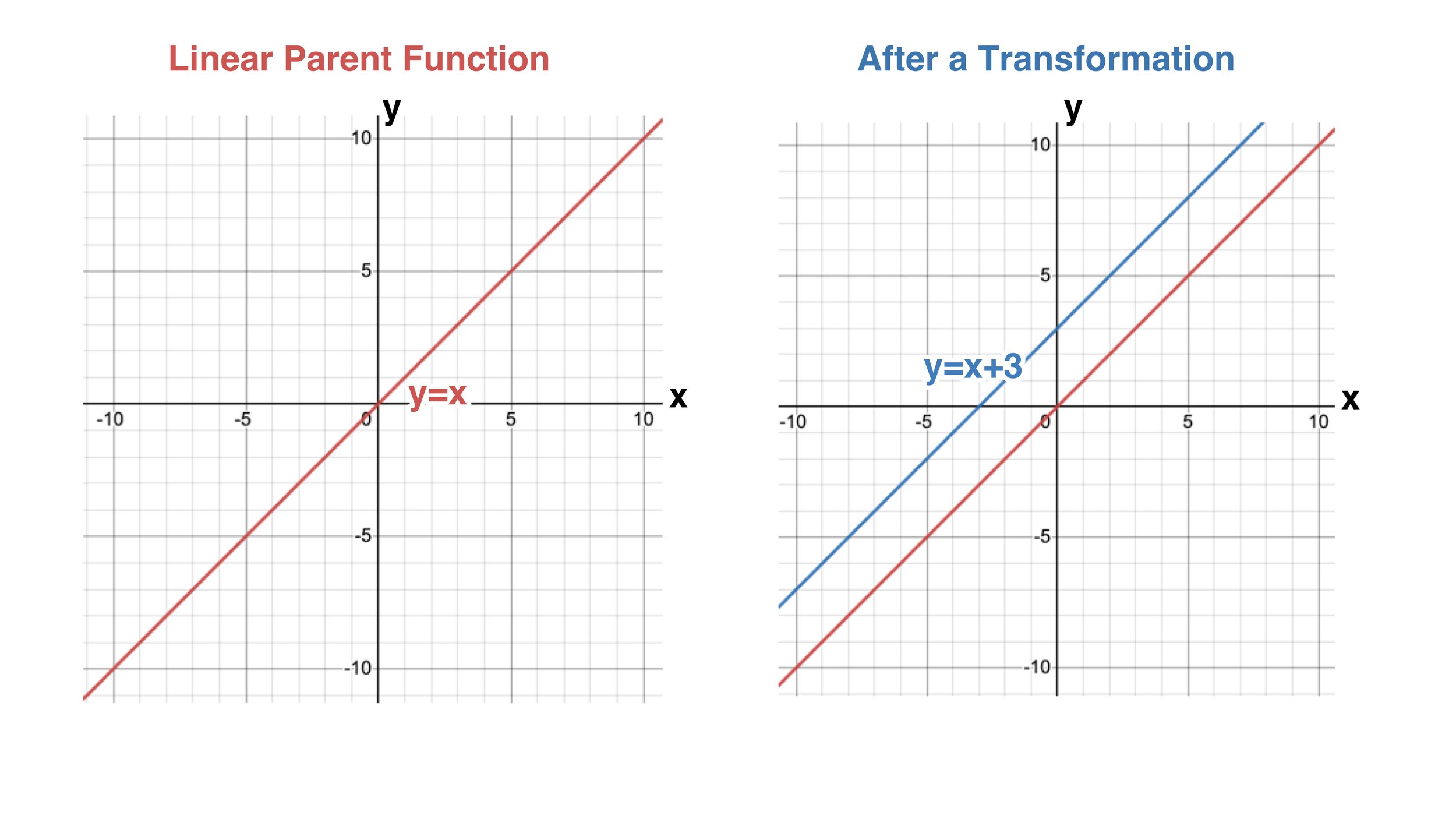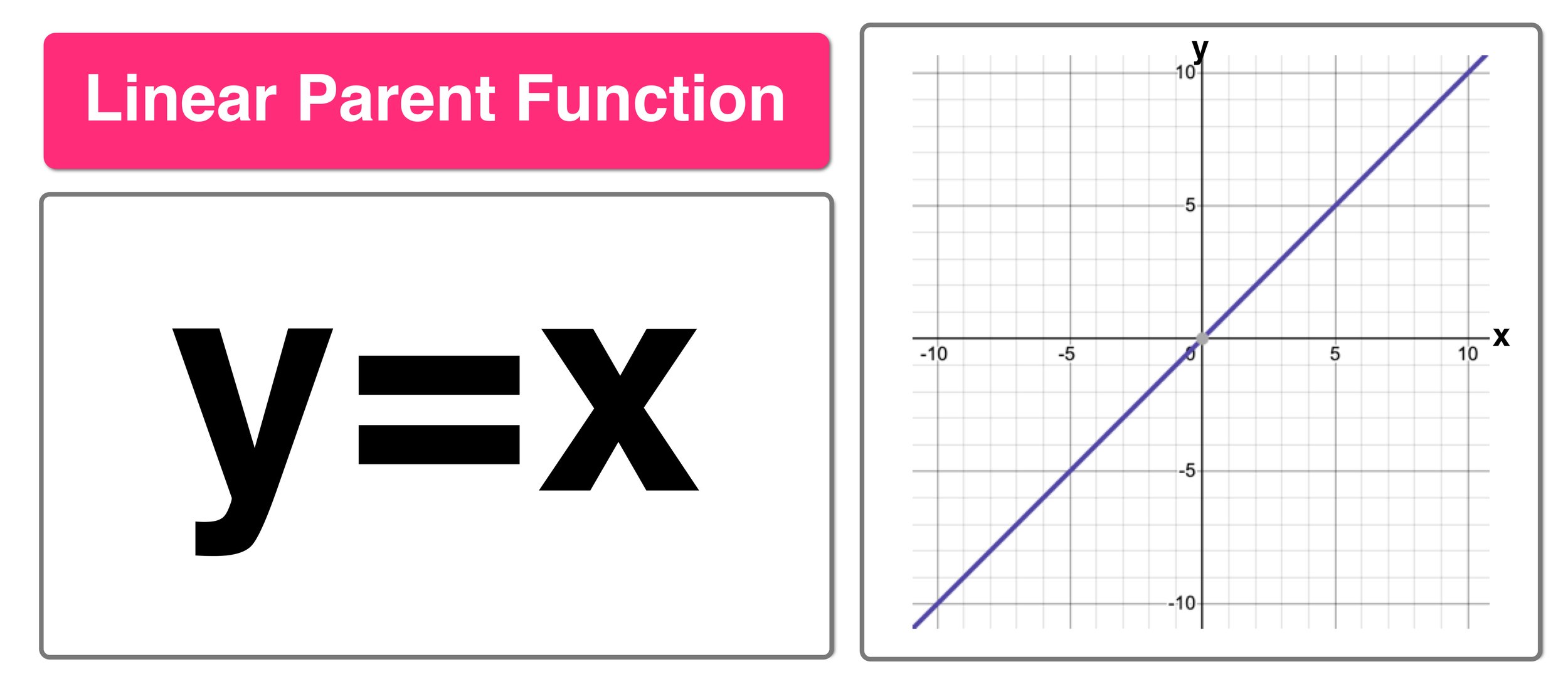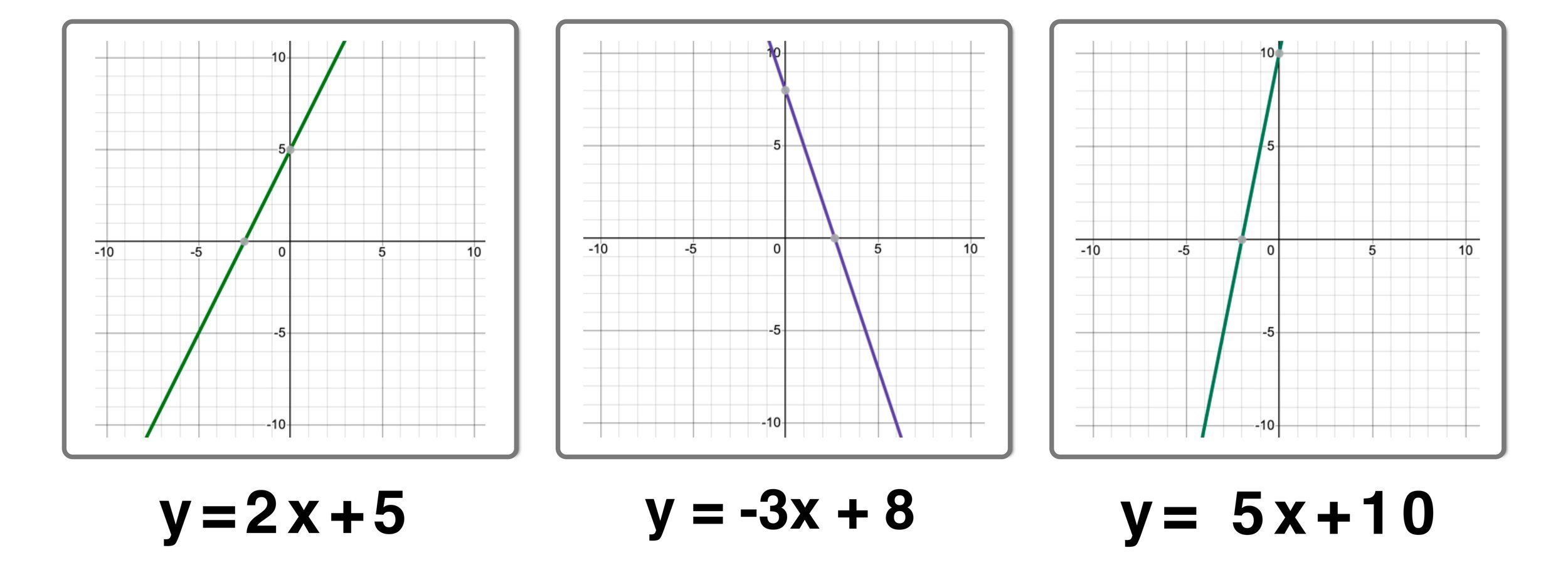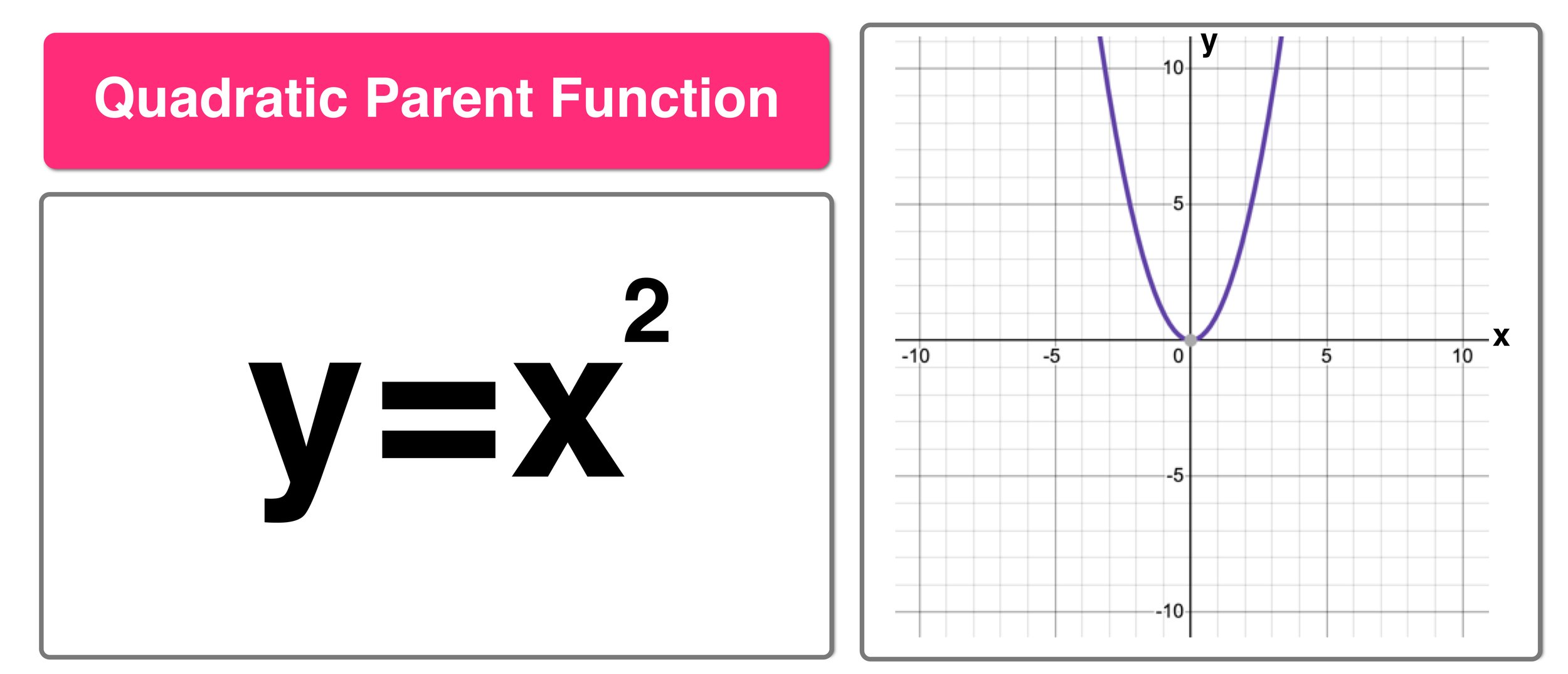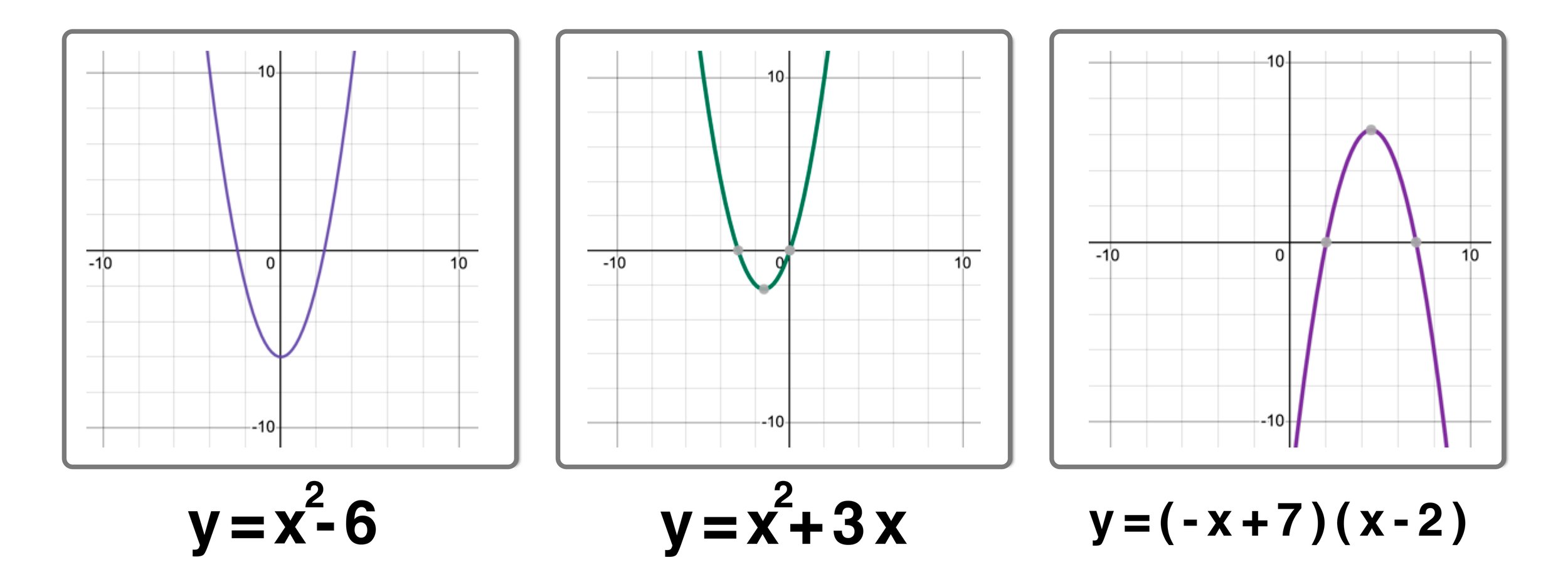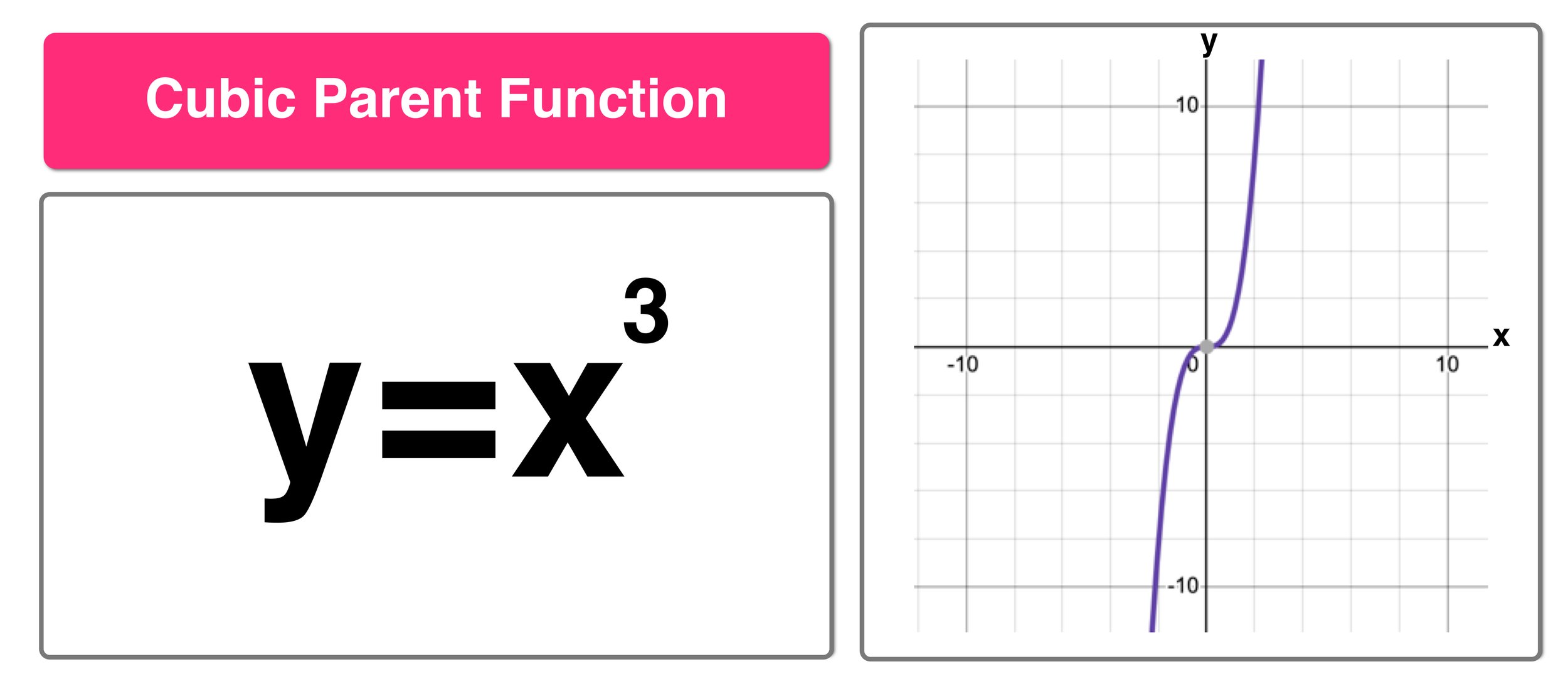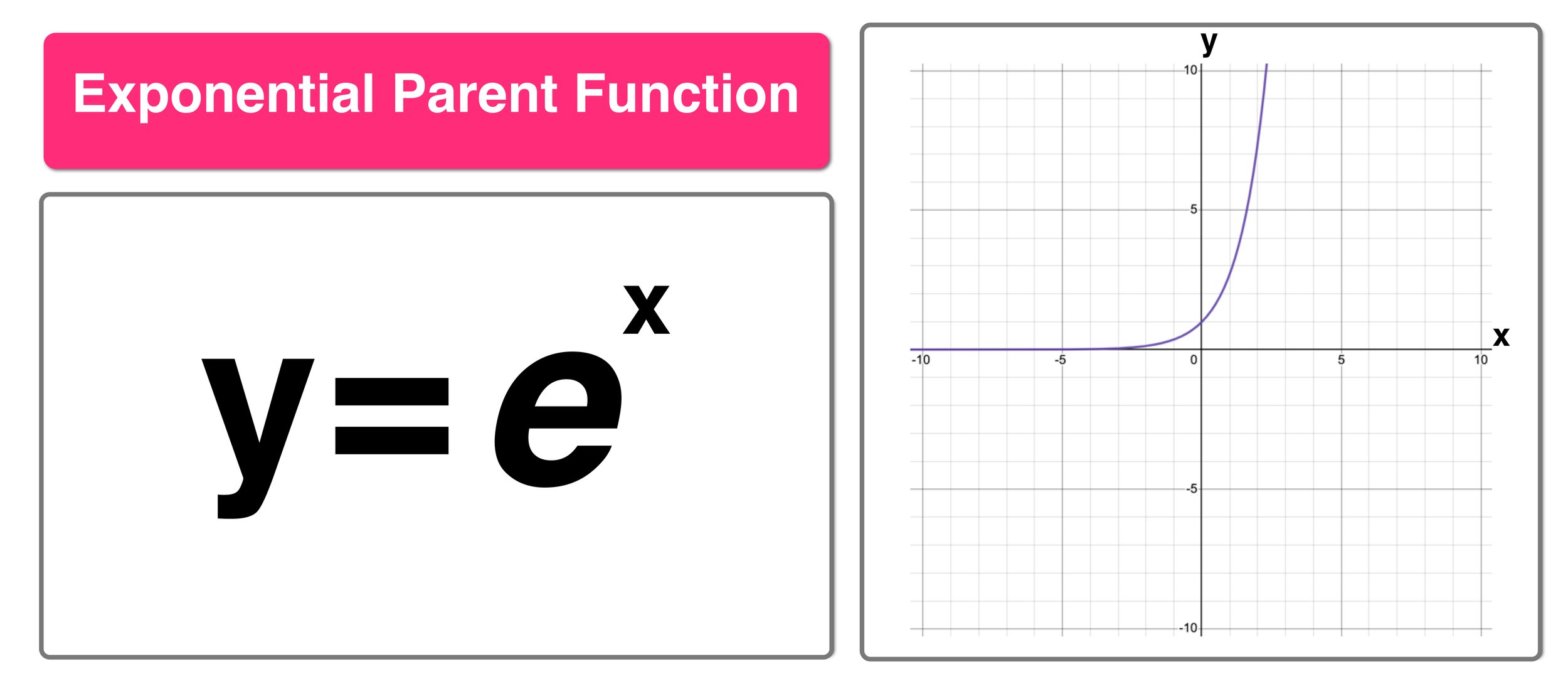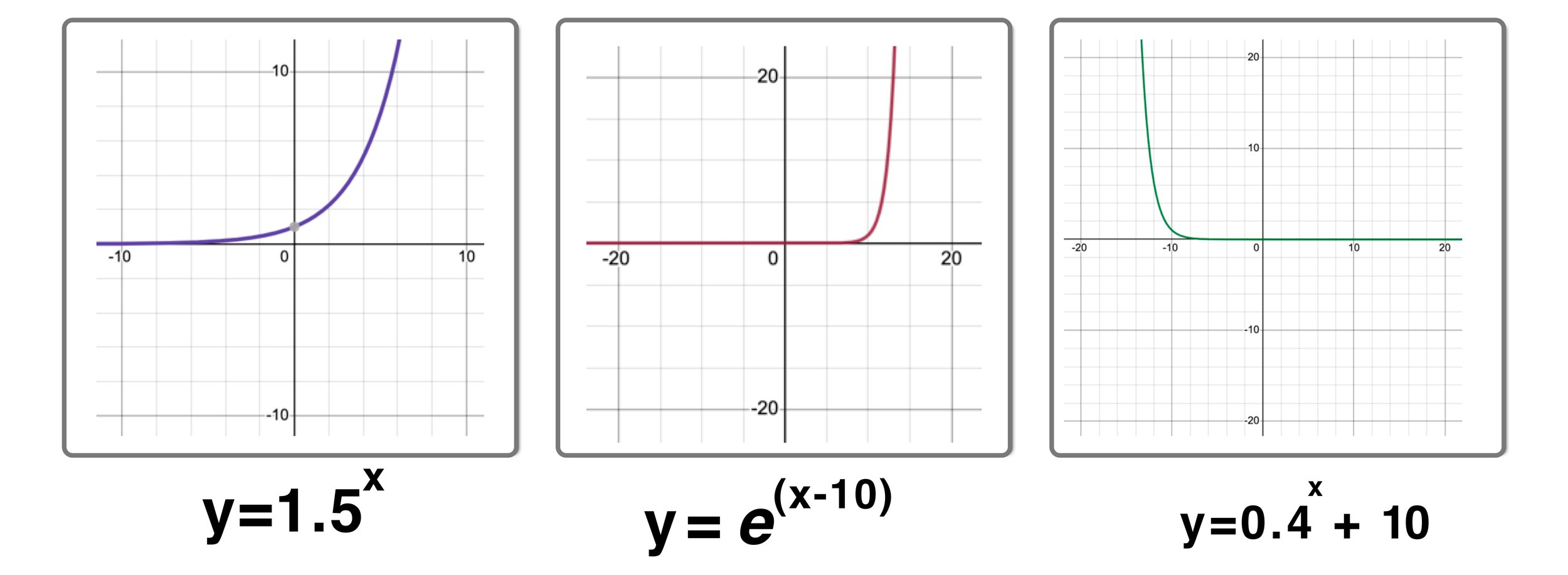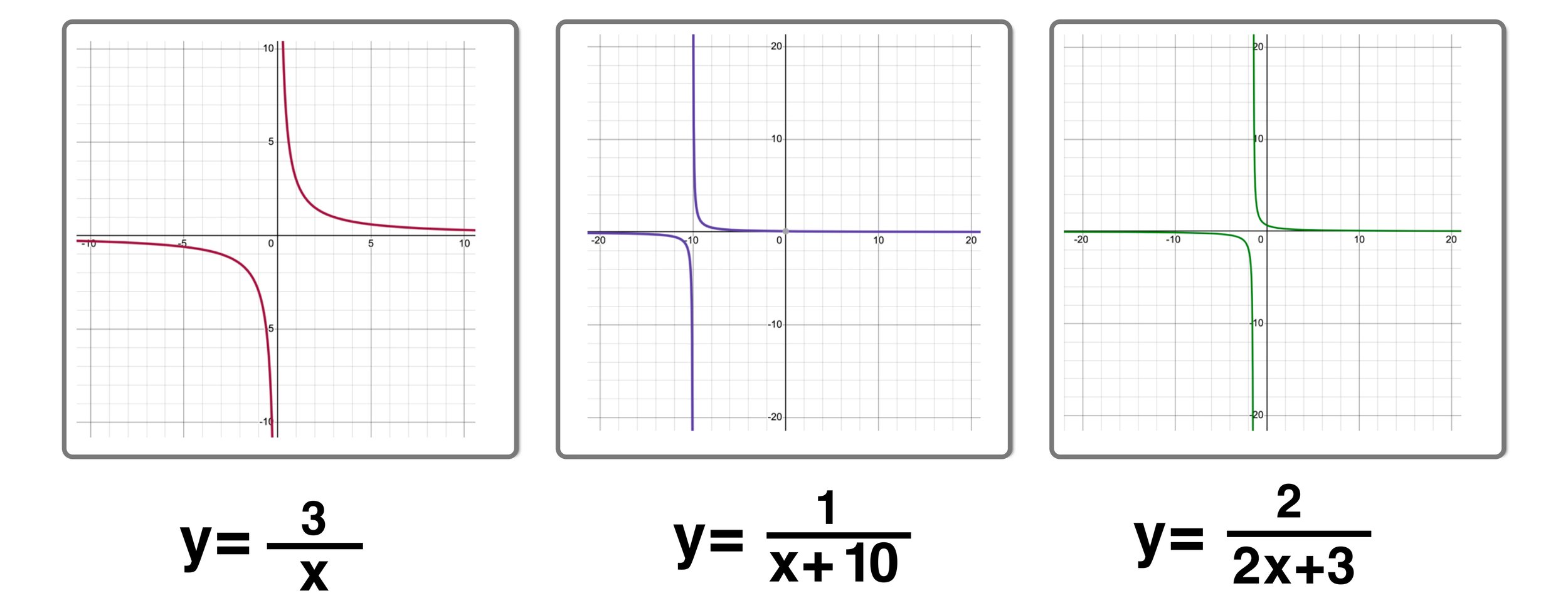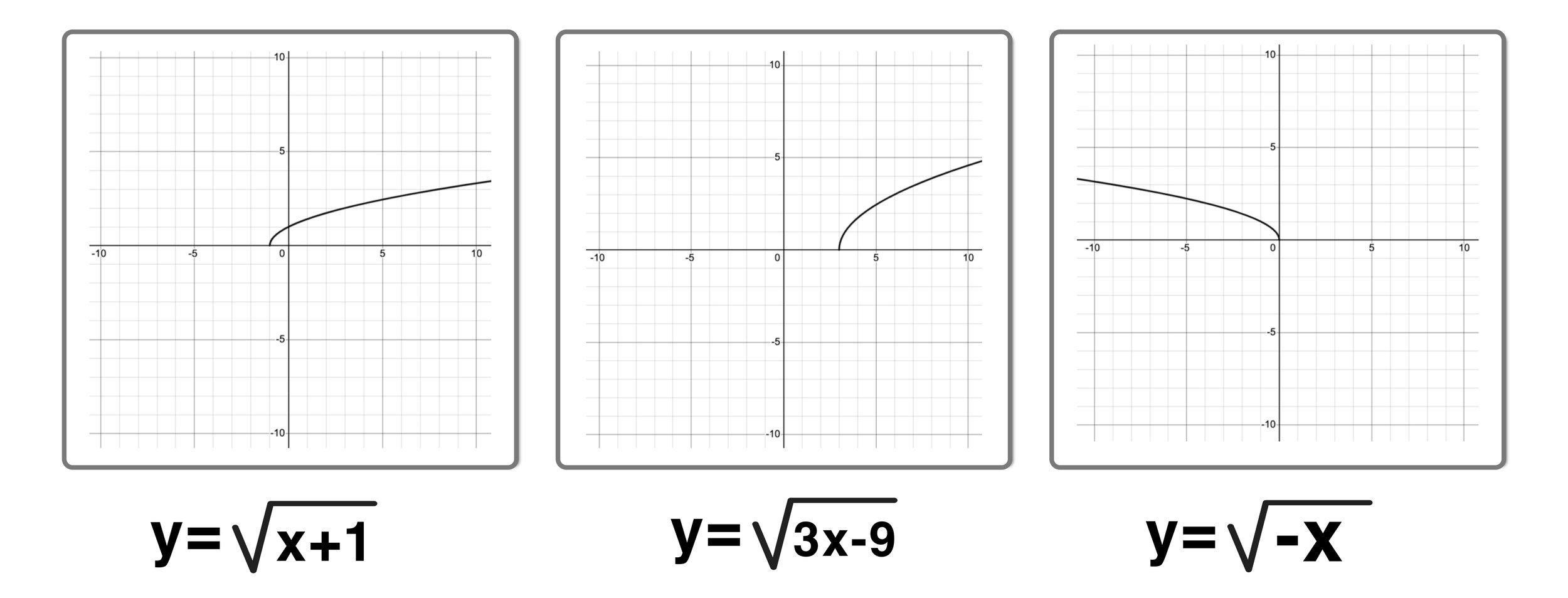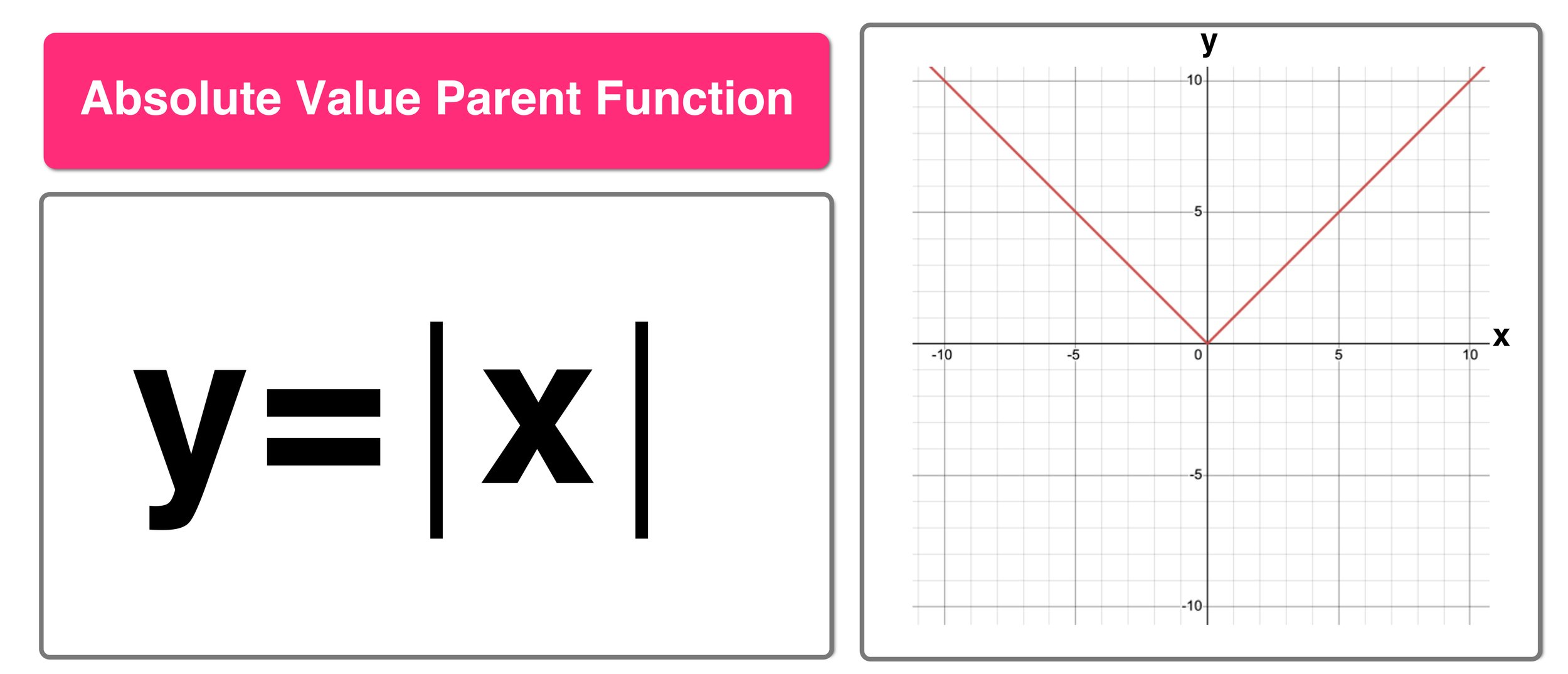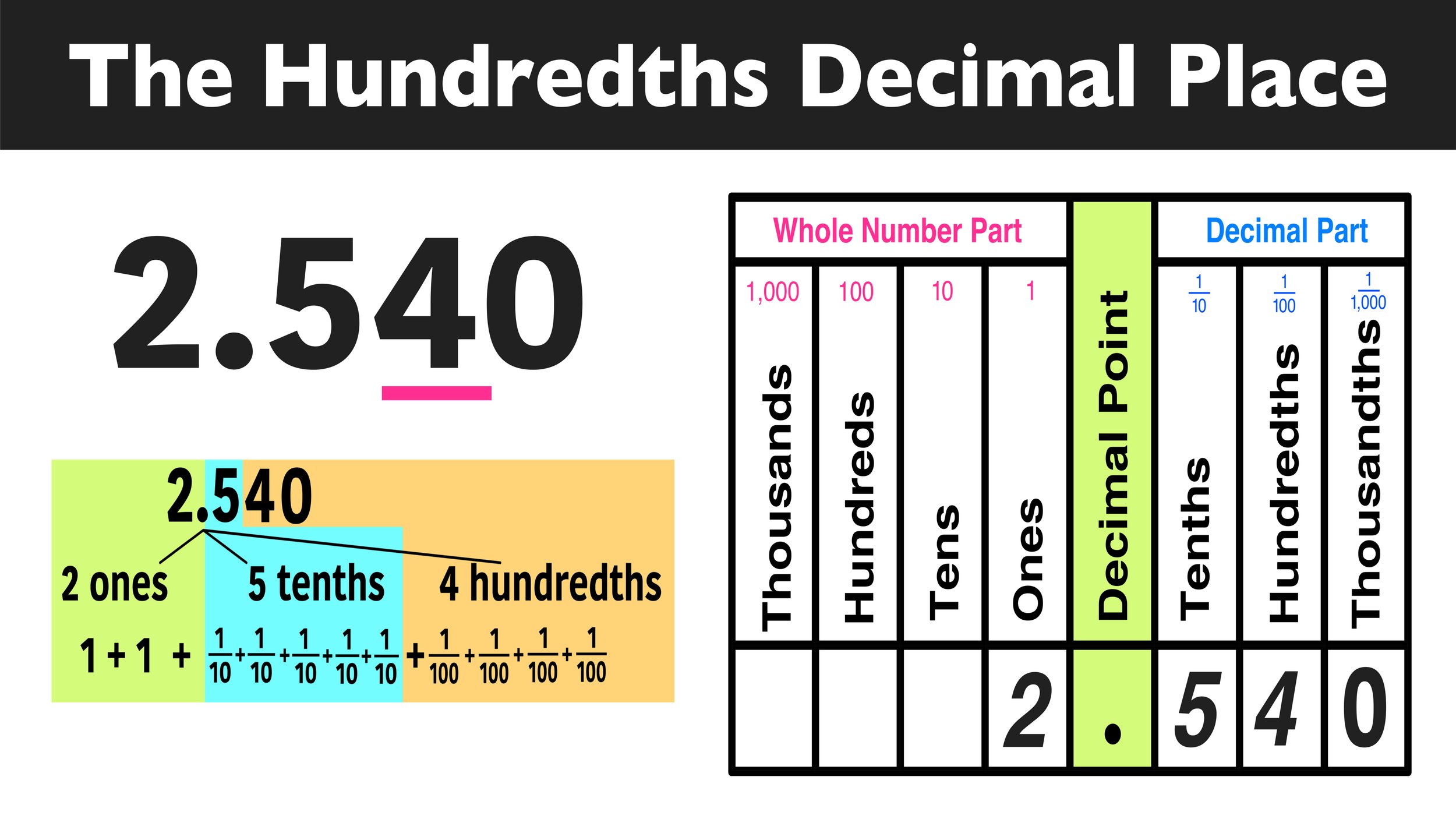What are Parent Functions and Parent Function Graphs?
Learning about parent functions and parent graphs will give you better insight into the behaviors of a myriad of other functions that you will often come across in algebra and beyond. Your conceptual understanding of parent functions and their graphs is the key to working out transformations of equations and graphs.
The following free guide to Parent Functions and Their Graphs will explain what parent functions are, what their graphs look like, and why understanding their behavior is so important in math. In this post, we will explore the parent functions of the following commonly occurring functions:
Absolute Value Parent Function
Linear Parent Function
Quadratic Parent Function
Cubic Parent Function
Exponential Parent Function
Inverse Parent Function
Square Root Parent Function
By the end of this guide, you will be able to identify the parent function of a function, use it to sketch graphs, and determine the function associated with a graph with ease!
Before you learn about parent functions and parent function graphs, let’s do a quick recap of some key vocabulary terms and definitions related to parent functions.
What is a parent function? What is a parent graph?
In math, a parent function is a function from a family of functions that is in its simplest form—meaning that it has not been transformed at all.
A parent graph is the graph of a parent function on the coordinate plane.
While these definitions may sound confusing at first glance, the concepts are actually pretty simple when you look at them visually.
For example, let’s consider the liner functions y=x and y=x+3.
In this case, the family of functions is the linear function (any function of the form y=mx+b) that represents a line of the coordinate plane.
So, in this case, y=x is the linear parent function, and y=x+3 is just a transformed version of the parent function (because it was shifted up three units from the original parent function’s position on the graph).
Again, notice that the function y=x is the linear parent function (the line y=x on the coordinate-plane is the parent graph) and that the function y=x+3 is a transformed version of the parent function (it was shifted 3 units upward).
All Parent Functions…
If you understand the linear parent function and what it represents, then you can understand all parent functions.
The animated GIF to the right further demonstrates what a linear parent function is and how it relates to all other linear functions.
The key takeaway right now is that every function family (linear, quadratic, cubic, square root, etc.) has a parent function which all other functions in that family can be derived from simply by transforming the basic parent function.
Parent Functions and Parent Graphs
What is a parent function and what are the parent function graphs?
Definition: A parent function is the most basic function from which a family of similar functions is derived. By performing various operations like addition, subtraction, multiplication, etc. on a parent function you obtain a function that belongs to the same family.
Parent function graphs are the graphs of the respective parent function. Any graph can be graphically represented by either translating, reflecting, enlarging, or applying a combination of these to its parent function graph.
Now, let’s find out in more detail about the parent functions and parent graphs of the following types of equations
1. Linear
2. Quadratic
3. Cubic
4. Exponential
5. Inverse
6. Square Root
7. Absolute Value
*Note that, in this guide, y= and f(x)= are used interchangeably and mean the same thing.
The Linear Parent Function
Linear Functions are one of the simplest types of functions you will learn. The general form of a single-variable linear function is f(x) = mx + b, where m, and b are constants, with a being non-zero.
Some examples of linear functions that are derived from the linear parent function are:
f(x) = 2x +5
f(x) = -3x +8
f(x) = 5x + 10
The parent linear function is y = x, which is the simplest form from which members of the linear function’s family can be derived.
Linear Parent function : f(x) = x
The parent function graph of linear functions is a straight line with a slope of 1 and passes through the origin.
The graph of a function whose parent function is linear will always be a straight line. The features that uniquely identify each member in the family of linear functions are its slope and intercepts.
Examples of Linear Functions:
The Quadratic Parent Function
Quadratic functions are functions of the 2nd degree. The general form of a single-variable quadratic function is f(x) = a*x^2 + b*x + c, where a,b, and c are constants and a is non-zero.
Here are some examples of quadratic functions that are derived from the quadratic parent function:
f(x) = x^2 - 6
f(x) = x^2 + 3x
f(x) = (-x+7)(x-2)
The quadratic parent function is f(x) = x^2
The parent function graph of quadratic functions is a parabola shape.
When we plot the graphs of the above-mentioned examples of quadratic functions, you can clearly see that they too have derived the characteristic parabola shape from their quadratic parent function.
Examples of Quadratic Functions:
The Cubic Parent Function
Cubic functions are third-degree functions. The general form of a single-variable cubic function is f(x) = a*x^3 + b*x^2 + c*x +d, where a,b,c, and d are arbitrary constants and a is non-zero.
A few examples of cubic functions that are derived from the cubic parent function include:
f(x) = x^3 + 4
f(x) = -x^3 + 3
f(x) = 2x^3 - 3x^2 - 6x
The cubic parent function is f(x) = x^3
If we take the third cubic function example, y = 2x^3 - 3x^2 - 6x, it will seem that the function is drastically different from the parent function yet visually the parent function graph, and the graph of the cubic function below aren’t far apart (see the graphs below for reference)
Examples of Cubic Functions:
As with visual similarity, functions also show behavioral similarity with their parent functions, which is why it is important to learn about them.
The Exponential Parent Function
Exponential functions are quite often used to mathematically represent the growth and decay of populations, investments, etc. The parent exponential function is f(x) = b^x, where b, commonly referred to as the base, is a positive non-zero number.
Examples of exponential functions that are derived from the exponential parent function include:
f(x) = 1.5^x
f(x) = e^(x - 10)
f(x) = 0.4^x + 10
You can look for variables present in the exponents of a function to easily identify if a function’s parent function is exponential.
The parent exponential graph f(x) = e^x is shown below:
Note that in the parent exponential graph the graph tends towards y = 0 as x goes towards negative infinity. This is the horizontal asymptote of the function. You will come across horizontal asymptotes for functions whose parent function is exponential.
Next, let’s see how the example exponential functions graphs look. See if you can determine their horizontal asymptotes.
Examples of Exponential Functions:
The Inverse Parent Function
Inverse functions also known as reciprocal functions have the variable (x) at the denominator of the function.
The parent inverse function is f(x) = 1/x.
Some examples of functions that fall under the family of inverse functions that are derived from the inverse parent function include:
f(x) = 3/x
f(x) = 1/(x+10)
f(x) = 2/(2x+3)
The parent inverse function has a vertical asymptote at the y-axis (x = 0), which can be seen in the behavior of the graph as x tends to 0.
Hence the presence of vertical asymptotes in a graph may be an indication that the parent function is inverse. Do you recognize the vertical asymptotes in the graphs of the example inverse functions below?
Examples of Inverse Functions:
The Square Root Parent Function
The parent function of square root functions is f(x) = sqrt(x).
The following are examples of square root functions that are derived from the square root parent function:
f(x) = sqrt(x+1)
f(x) = sqrt(3x -9)
f(x) = sqrt(-x)
The parent square root function has a range above 0 and a domain (possible values of x) of all positive real values. Therefore, the parent graph f(x) = sqrt(x) looks as shown below:
The graphs of the square root function examples also have their domains restricted.
Examples of Square Root Functions:
*Note: From the types of parent functions discussed in this blog, only functions derived from the square root and inverse parent functions inherit domain restrictions. You can use this pattern to distinctly identify functions from others.
The Absolute Value Parent Function
The final parent function covered in this guide is the absolute value parent function f(x) = | x |.
The following are examples of absolute value functions derived from the absolute value parent function:
f(x) = | x+4 |
f(x) = | 3x | - 4
f(x) = - | x - 1 | + 8
The absolute value parent function is defined by its V-shape with a sharp and pointy vertex. Take a close look at the absolute value function examples below to see their relationship to the parent function.
Examples of Absolute Value Functions:
Conclusion: Parent Functions and Parent Graphs
There are infinitely many functions, yet all functions can be classified as a derivation of a particular parent function. Functions tend to inherit behaviors and characteristics such as domain restrictions, range, asymptotes, etc. from their respective parent function. Hence, understanding the patterns of parent functions and their graphs will make it easier for us to handle complicated functions.
Need More Help?
Check out our animated video lesson on the parent functions and their transformations:

